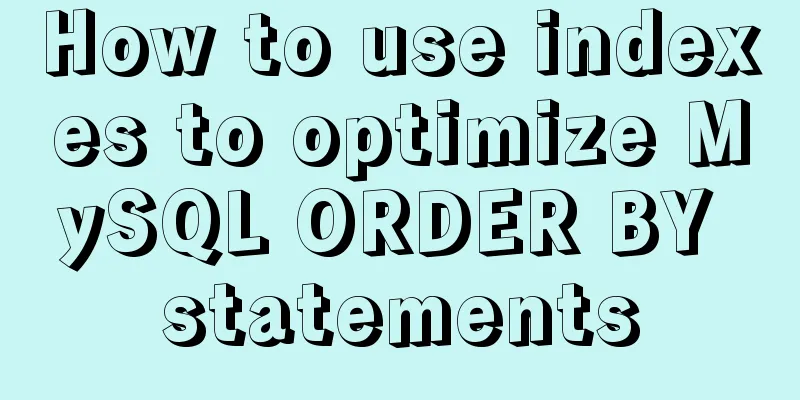MySql batch insert optimization Sql execution efficiency example detailed explanation

|
MySql batch insert optimization Sql execution efficiency example detailed explanation The number of itemcontractprice is about 10,000, and 5 logs are inserted for each itemcontractprice.
updateInsertSql.AppendFormat("UPDATE itemcontractprice AS p INNER JOIN foreigncurrency AS f ON p.ForeignCurrencyId = f.ContractPriceId SET p.RemainPrice = f.RemainPrice * {0},p.BuyOutPrice = f.BuyOutPrice * {0},p.ReservedPrice = f.ReservedPrice * {0},p.CollectedPrice = f.CollectedPrice * {0},p.AccessPrice = f.AccessPrice * {0} WHERE p.CurrencyId = {1} AND p.date BETWEEN '{2:yyyy-MM-dd}' AND '{3:yyyy-MM-dd}';", rate.ExchangeRate, exchangeRate.CurrencyId, rate.BeginDate, rate.EndDate);
updateInsertSql.AppendFormat("INSERT INTO `itemcontractpricelog`(`ContractPriceType`,`ContractPrice`,`FcContractPrice`,`IsExpire`,`LogRemark`,`CreatedByName`,`CreatedById`,`CreatedDate`,`LogTypeId`,`ProviderId`,`StageId`,`Date`,`CurrencyId`,`ContractPriceId`,`StockPattern`,`ItemId`) SELECT 0,c.RemainPrice,f.RemainPrice,c.RemainIsExpire,'外币汇率调整,重新计算人民币底价','job',0,NOW(),5,c.ProviderId,c.StageId,c.Date,c.CurrencyId,c.ContractPriceId,0,c.ItemId FROM itemcontractprice AS c INNER JOIN foreigncurrency AS f ON c.ForeignCurrencyId = f.ContractPriceId WHERE c.CurrencyId={0} AND c.date BETWEEN '{1:yyyy-MM-dd}' AND '{2:yyyy-MM-dd}';", exchangeRate.CurrencyId, rate.BeginDate, rate.EndDate);
updateInsertSql.AppendFormat(" INSERT INTO `itemcontractpricelog`(`ContractPriceType`,`ContractPrice`,`FcContractPrice`,`IsExpire`,`LogRemark`,`CreatedByName`,`CreatedById`,`CreatedDate`,`LogTypeId`,`ProviderId`,`StageId`,`Date`,`CurrencyId`,`ContractPriceId`,`StockPattern`,`ItemId`) SELECT 1,c.BuyOutPrice,f.BuyOutPrice,c.BuyOutIsExpire,'外币汇率调整,重新计算人民币底价','job',0,NOW(),5,c.ProviderId,c.StageId,c.Date,c.CurrencyId,c.ContractPriceId,0,c.ItemId FROM itemcontractprice AS c INNER JOIN foreigncurrency AS f ON c.ForeignCurrencyId = f.ContractPriceId WHERE c.CurrencyId={0} AND c.date BETWEEN '{1:yyyy-MM-dd}' AND '{2:yyyy-MM-dd}';", exchangeRate.CurrencyId, rate.BeginDate, rate.EndDate);
updateInsertSql.AppendFormat("INSERT INTO `itemcontractpricelog`(`ContractPriceType`,`ContractPrice`,`FcContractPrice`,`IsExpire`,`LogRemark`,`CreatedByName`,`CreatedById`,`CreatedDate`,`LogTypeId`,`ProviderId`,`StageId`,`Date`,`CurrencyId`,`ContractPriceId`,`StockPattern`,`ItemId`) SELECT 2,c.ReservedPrice,f.ReservedPrice,c.ReservedIsExpire,'外币汇率调整,重新计算人民币底价','job',0,NOW(),5,c.ProviderId,c.StageId,c.Date,c.CurrencyId,c.ContractPriceId,0,c.ItemId FROM itemcontractprice AS c INNER JOIN foreigncurrency AS f ON c.ForeignCurrencyId = f.ContractPriceId WHERE c.CurrencyId={0} AND c.date BETWEEN '{1:yyyy-MM-dd}' AND '{2:yyyy-MM-dd}';", exchangeRate.CurrencyId, rate.BeginDate, rate.EndDate);
updateInsertSql.AppendFormat("INSERT INTO `itemcontractpricelog`(`ContractPriceType`,`ContractPrice`,`FcContractPrice`,`IsExpire`,`LogRemark`,`CreatedByName`,`CreatedById`,`CreatedDate`,`LogTypeId`,`ProviderId`,`StageId`,`Date`,`CurrencyId`,`ContractPriceId`,`StockPattern`,`ItemId`) SELECT 3,c.CollectedPrice,f.CollectedPrice,c.CollectedIsExpire,'外币汇率调整,重新计算人民币底价','job',0,NOW(),5,c.ProviderId,c.StageId,c.Date,c.CurrencyId,c.ContractPriceId,0,c.ItemId FROM itemcontractprice AS c INNER JOIN foreigncurrency AS f ON c.ForeignCurrencyId = f.ContractPriceId WHERE c.CurrencyId={0} AND c.date BETWEEN '{1:yyyy-MM-dd}' AND '{2:yyyy-MM-dd}';", exchangeRate.CurrencyId, rate.BeginDate, rate.EndDate);
updateInsertSql.AppendFormat("INSERT INTO `itemcontractpricelog`(`ContractPriceType`,`ContractPrice`,`FcContractPrice`,`IsExpire`,`LogRemark`,`CreatedByName`,`CreatedById`,`CreatedDate`,`LogTypeId`,`ProviderId`,`StageId`,`Date`,`CurrencyId`,`ContractPriceId`,`StockPattern`,`ItemId`) SELECT 4,c.AccessPrice,f.AccessPrice,c.AccessIsExpire,'外币汇率调整,重新计算人民币底价','job',0,NOW(),5,c.ProviderId,c.StageId,c.Date,c.CurrencyId,c.ContractPriceId,0,c.ItemId FROM itemcontractprice AS c INNER JOIN foreigncurrency AS f ON c.ForeignCurrencyId = f.ContractPriceId WHERE c.CurrencyId={0} AND c.date BETWEEN '{1:yyyy-MM-dd}' AND '{2:yyyy-MM-dd}';", exchangeRate.CurrencyId, rate.BeginDate, rate.EndDate);
//var curContractPriceList = itemContractPriceList.Where(o => o.CurrencyId == exchangeRate.CurrencyId && o.Date >= rate.BeginDate && o.Date <= rate.EndDate).ToList();
logger.InfoFormat("Reserve price update and log sql:{0}", updateInsertSql.ToString());
//if (curContractPriceList.Count == 0) continue;
int effctRows = 0;
using (var tran = UnitOfWorkManager.Begin())
{
effctRows = taskRepository.ExecuteSql(updateInsertSql.ToString(), false);
tran.Complete();
}
logger.InfoFormat("Number of rows affected by the reserve price update: {0}", effctRows);
Normally it will take about 20 seconds. Previously, we used EF to query, which was time-consuming. Then we assembled the update statement and inserted the log (5 logs for each data). The network interaction time plus the time to open and close the database connection, the total execution time was about 10 minutes. Using SQL statements for batch operations can increase efficiency by 40 times, but the transmission of large amounts of data and the number of database processing times are time-consuming. Therefore, software development is not just about completing the development, but also about solving performance problems, which is the advanced stage of development. Thank you for reading, I hope it can help you, thank you for your support of this site! You may also be interested in:
|
<<: How to build php7 with docker custom image
>>: Using JS to determine the existence of elements in an array in ten minutes
Recommend
Tutorial on installing mysql8 on linux centos7
1. RPM version installation Check if there are ot...
Implementation process of row_number in MySQL
1. Background Generally, in a data warehouse envi...
Implementation of Nginx configuration of local image server
Table of contents 1. Introduction to Nginx 2. Ima...
In-depth understanding of React Native custom routing management
Table of contents 1. Custom routing 2. Tab naviga...
Writing High-Quality Code Web Front-End Development Practice Book Excerpts
(P4) Web standards are composed of a series of sta...
Detailed explanation of ssh password-free login configuration method (pictures and commands)
First, let me explain that what we want to do is ...
MySQL infrastructure tutorial: detailed explanation of the query statement execution process
Preface I have always wanted to know how a SQL st...
SQL group by to remove duplicates and sort by other fields
need: Merge identical items of one field and sort...
Analyze the difference between querySelector and getElementById methods in JavaScript
Table of contents 1. Overview 1.1 Usage of queryS...
Detailed explanation of vue.js dynamic components
:is dynamic component Use v-bind:is="compone...
Detailed explanation of the difference between adaptive and responsive analysis in vernacular
Based on daily development experience and relevan...
Share 8 CSS tools to improve web design
When one needs to edit or modify the website desi...
Vue Basic Tutorial: Conditional Rendering and List Rendering
Table of contents Preface 1.1 Function 1.2 How to...
Pure CSS3 to achieve beautiful input input box animation style library (Text input love)
Share a beautiful input box animation style libra...
Let's talk about what JavaScript's URL object is
Table of contents Overview Hash Properties Host p...









